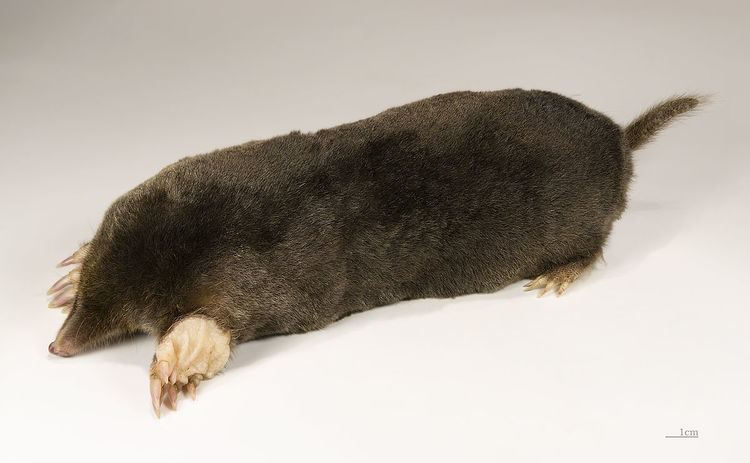Hex triplet #483C32 CMYK (c, m, y, k) (0, 60, 60, 30) Source ISCC-NBS | sRGB (r, g, b) (72, 60, 50) HSV (h, s, v) (30°, 17%, 34%) | |
 | ||
Taupe ( /ˈtoʊp/ TOHP), otherwise known as beige-brown, is a dark tan color in-between brown and gray. The word derives from the French noun taupe meaning "mole". The name originally referred only to the average color of the French mole, but beginning in the 1940s, its usage expanded to encompass a wider range of shades.
Contents
- Description
- Pale taupe mouse
- Light taupe
- Mauve taupe
- Rose taupe
- Sandy taupe
- Taupe gray
- Deep taupe
- Taupe brown
- References
Taupe is a vague color term which may refer to almost any grayish-brown or brownish-gray, but true taupe is difficult to pinpoint as brown or gray.
According to the Dictionary of Color, the first use of "taupe" as a color name in English was in the early 19th century; but the earliest citation recorded by the Oxford English Dictionary is from 1911.
Description
Taupe is a word that is used to denote any of a variety of colors. The colors it denotes fall into a range from dark tan to grayish brown or brownish gray. The word derives from the French noun taupe, which in turn is from the Latin talpa, both meaning "mole" (the mammal). The name originally referred only to the average color of the French mole, but (as in the case of the colors pink and lavender), beginning in the 1940s, its usage expanded to encompass a wider range of shades.
Taupe is a vague color term which may be used to refer to almost any grayish-brown, brownish-gray, or warm gray color. It often overlaps with tan and even people who use color professionally (such as designers and artists) frequently disagree as to what "taupe" means. Taupe itself, however, is not directly correlated with such colors as purple or pink. There is no single, generally recognized authority for such terms, but the addition of such colors can create a wider variety of shades which can benefit either art.
When viewed on a precisely calibrated monitor, the color displayed above-right matches the color sample called taupe referenced in the 1930 book A Dictionary of Color, the world standard for color terms before the invention of computers. However, the word taupe may often be used to refer to lighter shades of taupe today, and therefore another name for this color is dark taupe.
According to the Dictionary of Color, the first use of "taupe" as a color name in English was in the early 19th century; but the earliest citation recorded by the Oxford English Dictionary is from 1911.
Pale taupe (mouse)
The first recorded use of mouse as a color name in English was in 1606.
Light taupe
Light taupe (dark tan) is the light tone of taupe that is the color called taupe in Crayola colored pencils.
Mauve taupe
At right is displayed the color mauve taupe.
The first recorded use of mauve taupe as a color name in English was in 1925.
A popular brand of professional plastic chessboards marketed to chess masters in the 1960s had squares of this color and the color magnolia because it was felt that those two colors were both easy on the eyes and aesthetic together. These boards were used by chess master George Koltanowski in his chess tournaments in which he played blindfolded against dozens of people at a time.
Rose taupe
The color displayed at right is rose taupe.
The first recorded use of rose taupe as a color name in English was in 1924.
Sandy taupe
At right is displayed the color sandy taupe.
This color is also called taupe sand.
Taupe gray
Displayed at right is the color taupe gray.
Deep taupe
The color deep taupe is displayed at right.
The source of this color is the "Pantone Textile Paper eXtended (TPX)" color list, color #18-1612 TPX—Deep Taupe.
Taupe brown
The color taupe brown is a very dark shade of tan that almost appears brown and is displayed at right.
This is the color shown as the color taupe brown in ISCC-NBS color sample #46.
Another name for this color is medium taupe.
